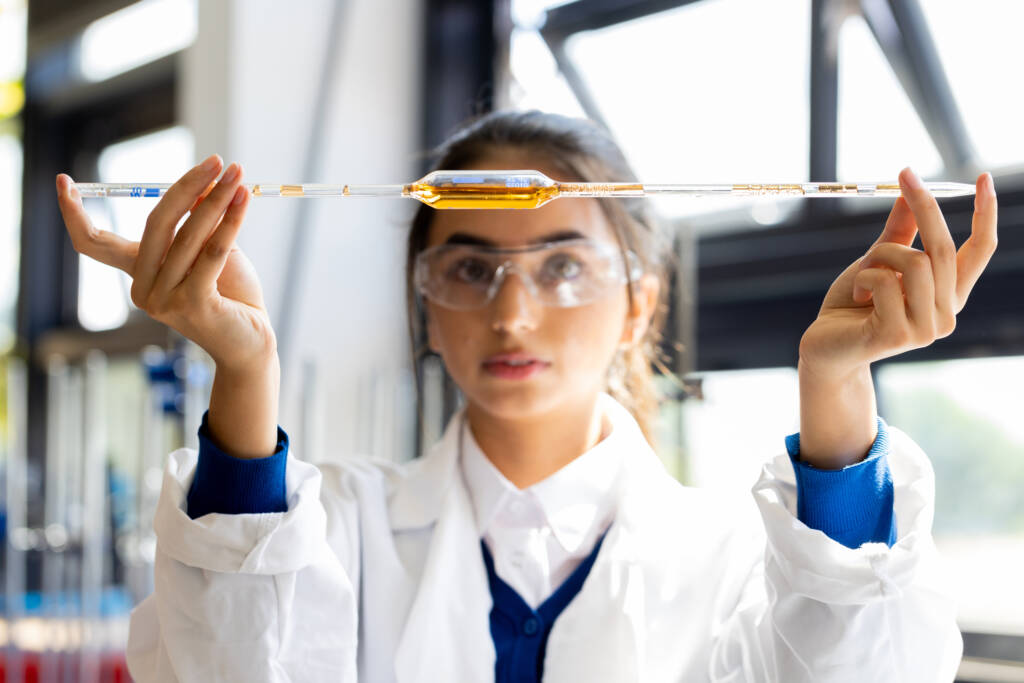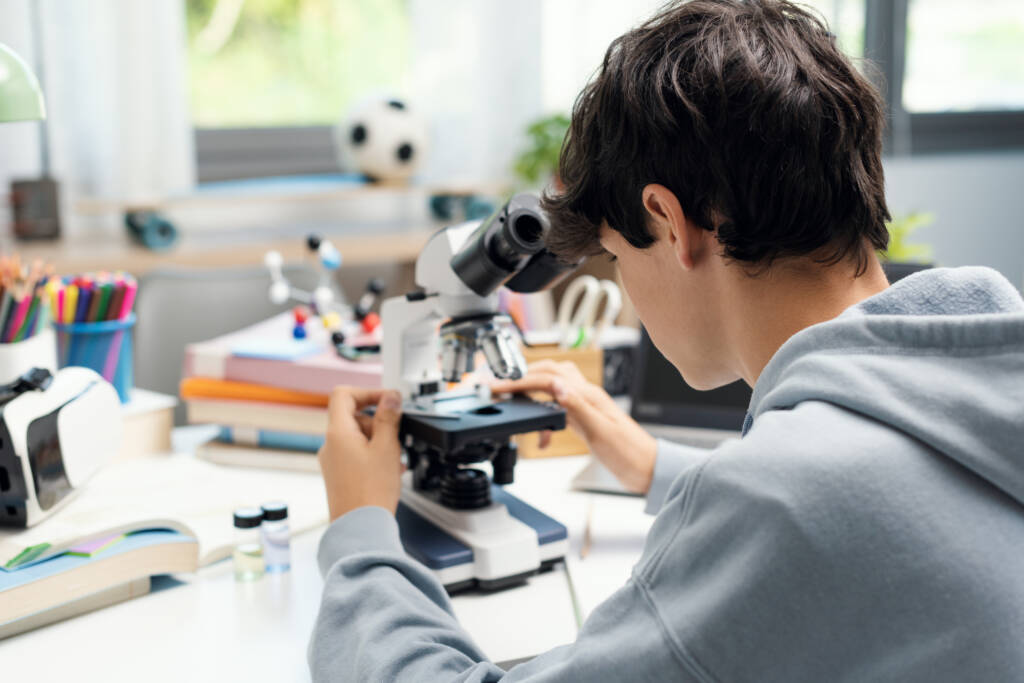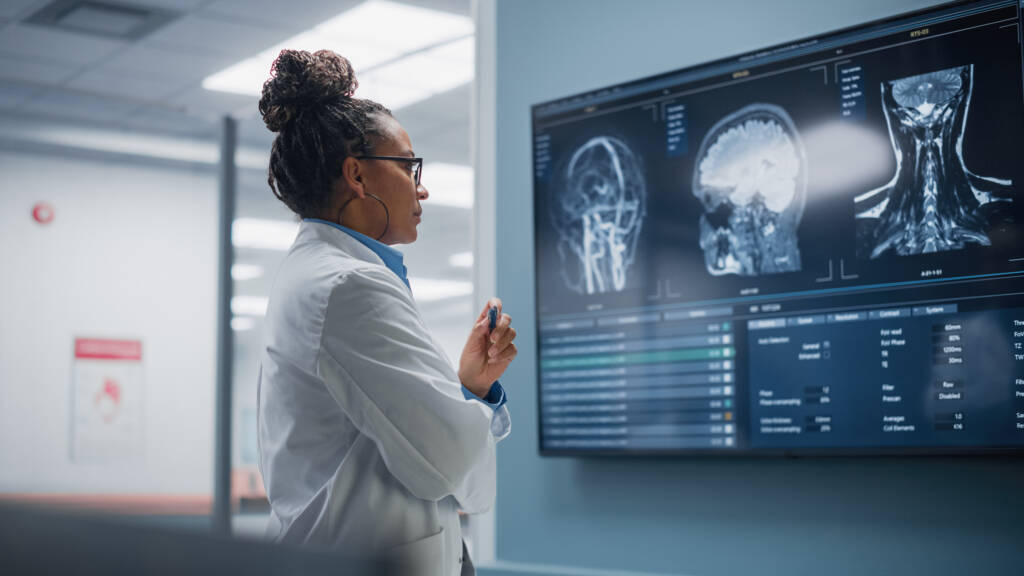
Anatomy and Physiology 1b (lab)

Anatomy and Physiology 1b: Discovering Form and Function
Building on the prior prerequisite course, students will examine the form and function of even more body systems. Students will learn about the structure, function, and interrelation between the lymphatic, immune, respiratory, digestive, urinary, and endocrine systems. The reproductive system is also discussed along with hereditary traits and genetics. Finally, students will explore the importance of accurate patient documentation as well as technology used in the industry.
This is a lab course.
During this course, you will learn career-related skills and earn a badge for this accomplishment. A badge is a digital certification of your career-related learning that you can share on social media and higher education platforms, or with colleges, potential employers, peers, and colleagues. Select this link to learn more about badges.
Major Topics and Concepts
Unit 1: The Lymphatic and Immune System
What will you learn in this unit?
Describe the structure and function of the immune system
Compare and contrast the different types of immunity
Explain the relationship between the lymphatic and circulatory systems
Discuss common diseases and disorders of the lymphatic and immune system
Unit 2: The Respiratory System
What will you learn in this unit?
Describe the structure and function of the respiratory system
Compare and contrast ventilation and respiration
Explain gas exchange
Discuss common diseases and disorders of the respiratory system
Unit 3: The Digestive System
What will you learn in this unit?
Describe the organization of the digestive system
Explain the structure and function of the digestive system
Discuss the six digestive processes and the digestive enzymes
Describe diseases and disorders of the digestive system
Unit 4: The Urinary System
What will you learn in this unit?
Describe the organization of the urinary system
Explain the structure and function of the urinary system at both a macro and micro level
Compare and contrast the female and male urinary systems
Explain how urine is formed and excreted from the body
Describe diseases and disorders of the urinary system
Unit 5: The Reproductive System and Genetics
What will you learn in this unit?
Compare and contrast the organization of the male and female reproductive systems
Explain the structure and function of the reproductive system
Discuss genes and chromosomes from conception to birth
Understand how a negative is used to create an image print
Describe common diseases and disorders of the reproductive system
Unit 6: The Endocrine System
What will you learn in this unit?
Describe the organization of the endocrine system
Explain the structure and function of organs of the endocrine system
Explain how the endocrine system maintains homeostasis
Describe diseases and disorders of the endocrine system
Unit 7: Assessing and Documenting Anatomy and Physiology
What will you learn in this unit?
Identify purposes of a healthcare record
Discuss legal guidelines for documentation
Describe confidentiality and the laws that govern patient privacy
Describe the different methods of data collection
Conduct a health history
Organize a basic body systems physical assessment
Unit 8: The Science & Technology of Anatomy & Physiology
What will you learn in this unit?
Describe the history of anatomy and physiology as a science
Distinguish between the scopes of practice of various healthcare professions
Differentiate between qualitative and quantitative research
Discuss examples of different types of research studies that can advance the science of anatomy and physiology
Illustrate the ways in which healthcare professionals work collaboratively
Competencies
The Immune System
Students will demonstrate an understanding of the immune system by describing the lymphatic system, explaining the immune system, and comparing diseases and disorders of the immune system.
The Respiratory System
Students will demonstrate an understanding of the respiratory system by describing the upper respiratory system, describing the lower respiratory system, and explaining diseases and disorders of the respiratory system.
The Digestive System
Students will demonstrate an understanding of the digestive system by describing the upper digestive system, describing the lower digestive system, and explaining diseases and disorders of the digestive system.
The Urinary System
Students will demonstrate an understanding of the urinary system by describing the urinary system structures, explaining the urinary system filtration, and summarizing diseases and disorders of the urinary system.
The Reproductive System
Students will demonstrate an understanding of the reproductive system by describing the function of the male reproductive system, describing the function of the female reproductive system, and explaining genetics and heredity.
The Endocrine System
Students will demonstrate an understanding of the endocrine system by explaining the organization of the endocrine system, explaining the function of the endocrine system, and describing diseases and disorders of the endocrine system.
Anatomy and Physiology
Students will demonstrate an understanding of anatomy and physiology by describing medical data records, summarizing physical assessment, and describing body system assessment.
Science of Anatomy and Physiology
Students will demonstrate an understanding of the science of anatomy and physiology by summarizing the history of medicine, describing scientific research, and explaining healthcare careers.

